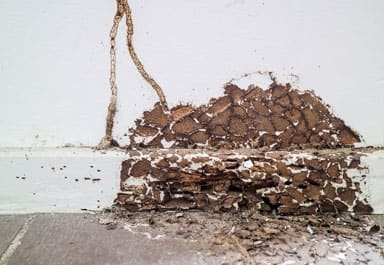Termite Control 101: How to Protect Your Home from Silent Destroyers
When it comes to home threats, termites are among the most destructive—and the most underestimated. Known as the “silent destroyers,” termites can chew through wood, flooring, and even wallpaper, often without any visible signs until the damage is done. That’s why termite control is not just a pest solution—it’s a long-term investment in your property’s safety and value.
Whether you're a homeowner, renter, or real estate investor, understanding how termite infestations start, what signs to watch for, and how to effectively eliminate them can save you thousands of dollars in repairs. This guide will walk you through the essentials of termite control and why professional help often makes all the difference.
Why Termite Control Is Critical
Termites may be small, but their impact is massive. Each year, termites cause over $5 billion in property damage in the U.S. alone—and most of it isn’t covered by homeowner’s insurance.
What makes termites particularly dangerous is their ability to work quietly. Unlike other pests, they don’t leave obvious trails, and they often stay hidden inside walls, under flooring, or deep within wooden structures. By the time you notice the problem, they may have already compromised your home’s foundation.
Effective termite control isn’t just about getting rid of bugs—it’s about protecting your home’s structural integrity.
Types of Termites You Might Encounter
Understanding which type of termite you’re dealing with can help in selecting the right treatment. Here are the most common types:
1. Subterranean Termites
These are the most destructive kind. They live underground and build mud tubes to access above-ground food sources. Subterranean termites thrive in moist conditions and can spread rapidly.
2. Drywood Termites
Unlike subterranean termites, these pests don’t require contact with soil. They infest dry wood found in your attic, furniture, or wooden framing and often go unnoticed for months.
3. Dampwood Termites
Attracted to moisture, dampwood termites often appear in homes with plumbing issues or poor ventilation. They typically infest rotting wood and are less common in dry climates.
Early Signs of a Termite Infestation
Catching a termite problem early can make treatment easier and less costly. Look out for these signs:
Mud tubes on walls or foundations (a sure sign of subterranean termites)
Discarded wings near windows or light fixtures (often after a swarm)
Hollow-sounding wood when tapped
Small holes or blistering paint on wood surfaces
Piles of frass (termite droppings) that resemble sawdust
If you notice any of these, it’s time to call a termite control professional immediately.
Termite Control: DIY vs. Professional Treatment
You might be tempted to tackle a termite problem on your own, but termite infestations are rarely simple. DIY treatments like sprays or baits can help in mild cases, but they often fail to reach the root of the infestation—especially when the colony is hidden deep inside the structure.
Here’s why professional termite control is your best bet:
Thorough inspection of the property using thermal imaging or moisture meters
Accurate identification of termite species and infestation level
Custom treatment plans using liquid termiticides, baits, or fumigation
Long-term monitoring to prevent re-infestation
Warranties or guarantees on the service
Professional termite exterminators are trained to locate termite nests and eliminate the entire colony—not just the visible damage.
Prevention: Your Best Defense Against Termites
The most effective termite control strategy is prevention. Here’s how you can protect your home from future infestations:
Keep your home dry. Fix leaks and maintain proper drainage to reduce moisture.
Seal cracks in your home’s foundation, walls, and roof to block entry points.
Store firewood away from your house and off the ground.
Use treated wood for outdoor structures like decks or sheds.
Schedule annual termite inspections with a licensed pest control company.
A proactive approach not only keeps termites away but also gives you peace of mind.
Final Thoughts
Termites might be out of sight, but they should never be out of mind. Their ability to silently destroy your home from the inside makes termite control an essential part of property maintenance. Whether you’re dealing with an active infestation or just want to take preventive steps, acting now can save you from costly repairs later.
Termite Control Laredo, TX
https://delvallepestcontrol.com/termites-services/


@1698221072201205_4568
Guardian Termite & Pest Control LLC: Your Trusted Ally in Defending Against Pests | #guardian pest control laredo reviews
CBD Roll-On for Pain Relief: A Convenient Solution for Everyday Aches | #cbd Roll-On For Pain Relief
Hermès Geta: A Contemporary Take on Timeless Luxury | #hermes geta #imitation hermes birkin handbags #replica hermes birkin










